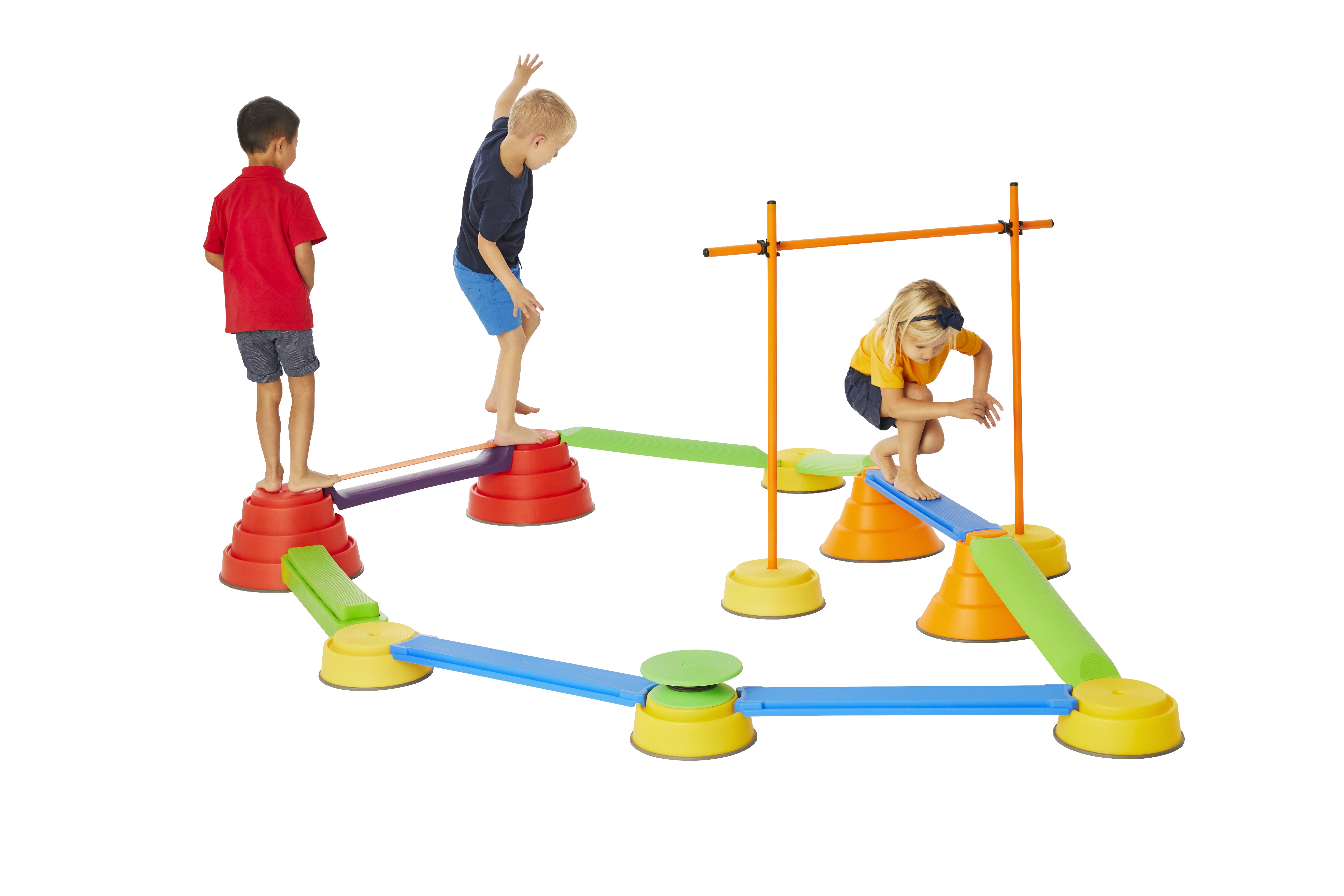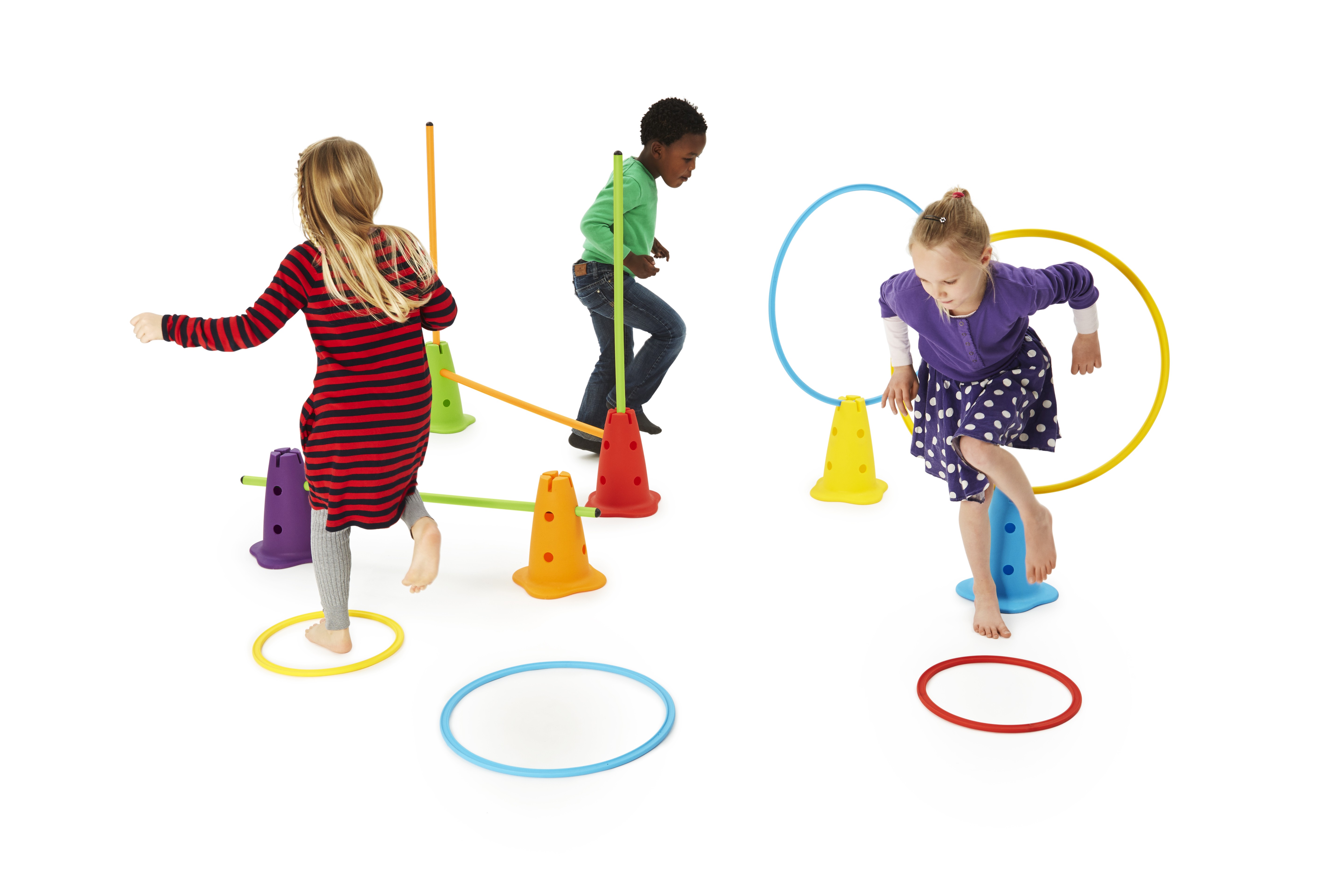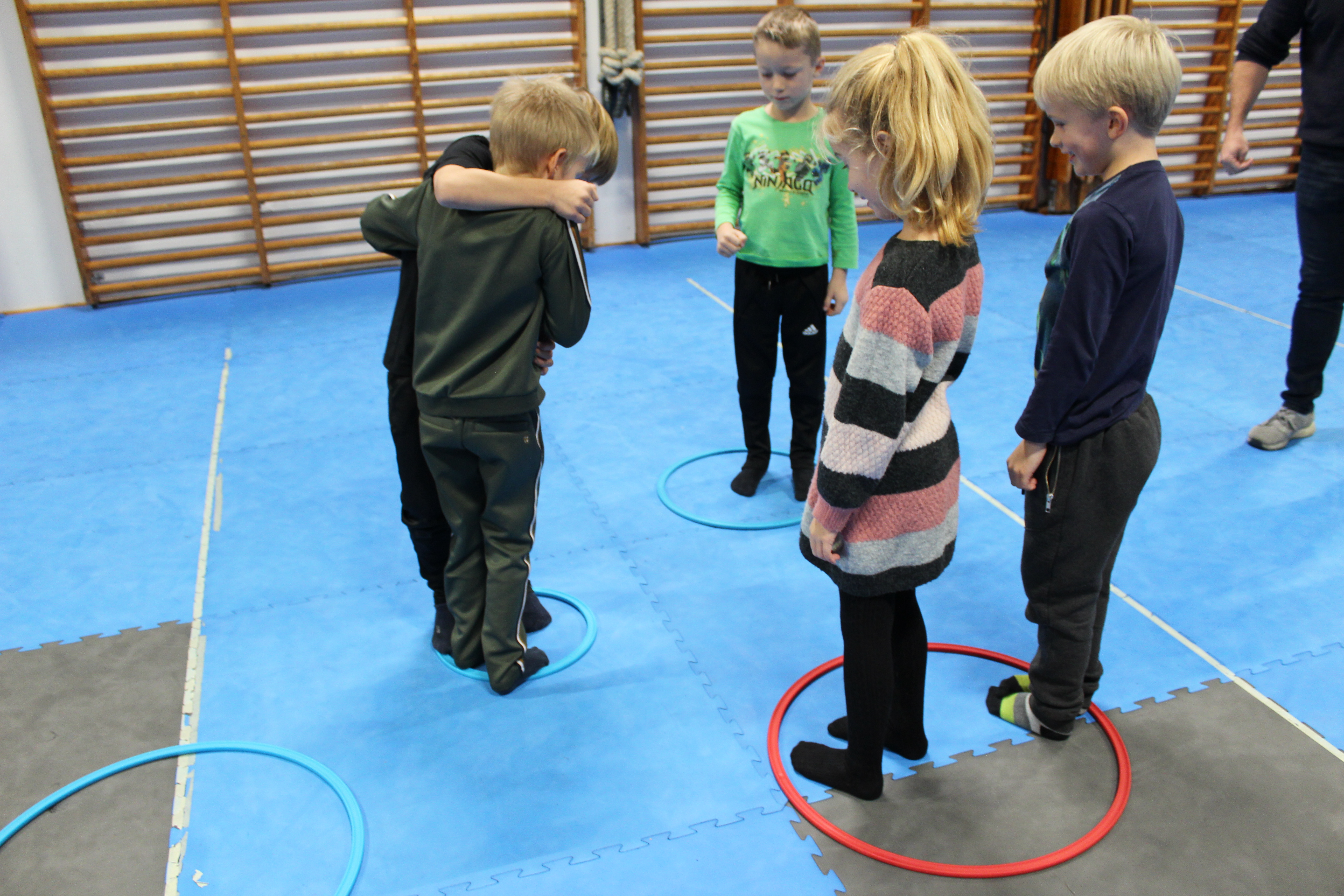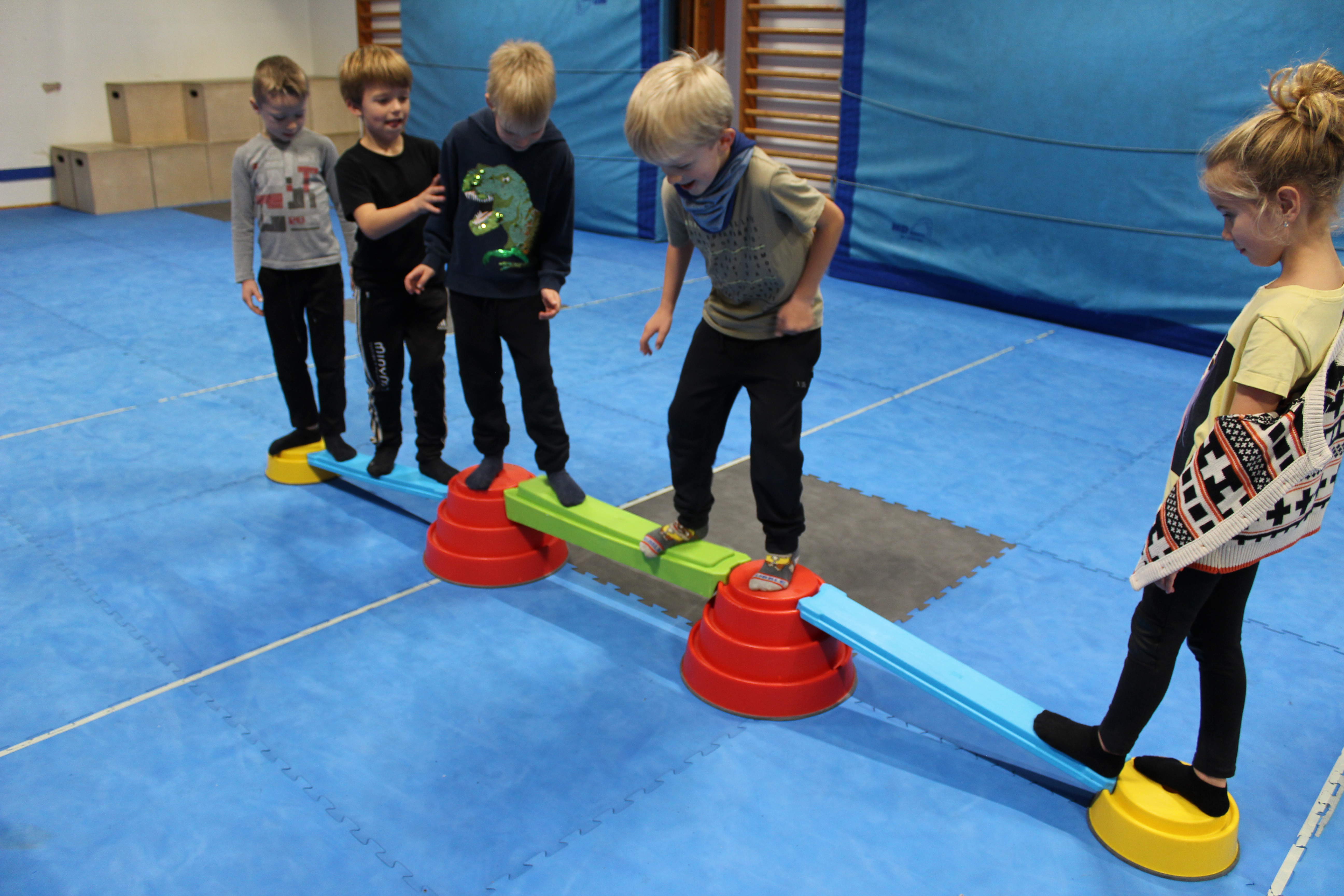CASE
A kindergarten leader wrote to us and explained that in a large group, the children tended to be “every man for himself”, and there were frequent conflicts in the cloakroom. She asked if it was possible to combine motor skills and movement in an attempt to teach the children to cooperate and help each other better.
In no time, we came up with the obvious choice, i.e. the “Move to a new island” game using Gonge Hula Hoops or Build N’Balance®. In this game, the children have to work together to ensure that as many children as possible remain in the game for as long as possible, without any of them falling off.
Rules of the game (basic level)
The adult spreads Gonge Hula Hoops across the floor. Each hoop is an island. There should be one less hoop than there are children. Ask the children to hop from one island to the next and tell them to work together to ensure that as many as possible survive. During the game, when the adult shouts ‘Move’, the children have to jump to a new island. When the children have tried this a couple of times, the adult removes one hoop. As there are gradually fewer and fewer hoops, the challenges increase, as the children have to share the space inside the hoops.
Developments (advanced level)
The adult sets up Build N’ Balance® elements in a circle. The children stand on the trail. Set the children off walking along the trail. The adult removes one element at a time so the trail gradually becomes smaller. Now the children have to work together to keep as many children as possible on the shorter trail.
Important notes
Some children find it difficult to judge space and direction. If this is the case, start by laying only the planks on the floor. Practise the game and introduce either the yellow or red tops. As you gradually increase the height of the trail, you effectively adapt the game to the children’s functional capacity. Alternatively, you could use Gonge River and Riverlandscape elements.
We repeated the activity over a number of weeks.The first time, we found that the children fended for themselves. They jumped from one island to the next without paying attention to each other. They jumped, pushed each other off or landed on the one island at the same time, which meant that both children were eliminated. They tended to stand with their backs to each other and push against each other for fear of being knocked out of the game.
After a couple of games, we noticed that the children had made significant progress. Now they talked about how they would jump and if a child wobbled on landing, the other children would reach out to stabilise their buddy. They no longer stood back to back, but facing each other inside the Hula Hoops and were therefore able to read each others’ signals, and speak to and hold onto each other. In the end, they succeeded in cooperating so that there was space enough for them all.









